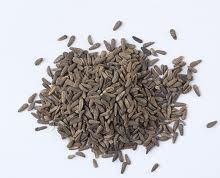Antibacterial. Diuretic.[3]
Antipyretic, stops coughing.
[1] Barefoot Doctor's Manual- 1977 Prepared
by the Revolutionary Health Committee of Hunan Province. Original Chinese manual-
Victor W. Sidel. Originally published by Dr Joseph Quin and the Fogarty International
centre, Bethdesda (1974). Madrona Publishers Seattle Washington ISBN 0-914842-52-8
[2] A Complete English Dictionary of Medicinal Terms in Chinese Acupuncture
and Herbalism 1981- Henry Lu Chinese Foundations of Natural Health- The Academy
of Oriental Heritage, Vancouver, Canada.
[3] Translation notes from Gary Seiford and Hocu Huhn - NSW College of Natural
Therapies. Sydney Australia.
[4] Chinese Herbal Medicine Materia Medica- Dan Bensky and Andrew Gamble- Eastland
Press 1986 Seattle Washington ISBN 0-939616-15-7
[5] Chinese Medicinal Herbs- Beatrice Bliss (1973) Compiled by Li Shi- Chen.
Translated and Researched by F. Porter Smith and G. A. Stuart. Geogetown Press,
San FranciscoISBN 0 914558005
Images
1.
commons.wikimedia.org
by Christian Fischer CC BY-SA 3.0
2.
activeherb.com
3.
[1]
4.
dianshu119.com [1] Encylcopedia of Common Natural Ingredients
used in Food Drugs and Cosmetics", Albert Y Leung. Pub. John Wiley &
Sons Inc (1980) NY
[2] Tsujita, J. et al. (1979) Nutr. Rep. Int. 20 (5),
635
 Arctium
lappa. 牛
蒡 子
Niú bàng zi Burdock
Family: Asteraceae
Arctium
lappa. 牛
蒡 子
Niú bàng zi Burdock
Family: Asteraceae


 HABITAT:
Mostly cultivated.
HABITAT:
Mostly cultivated.